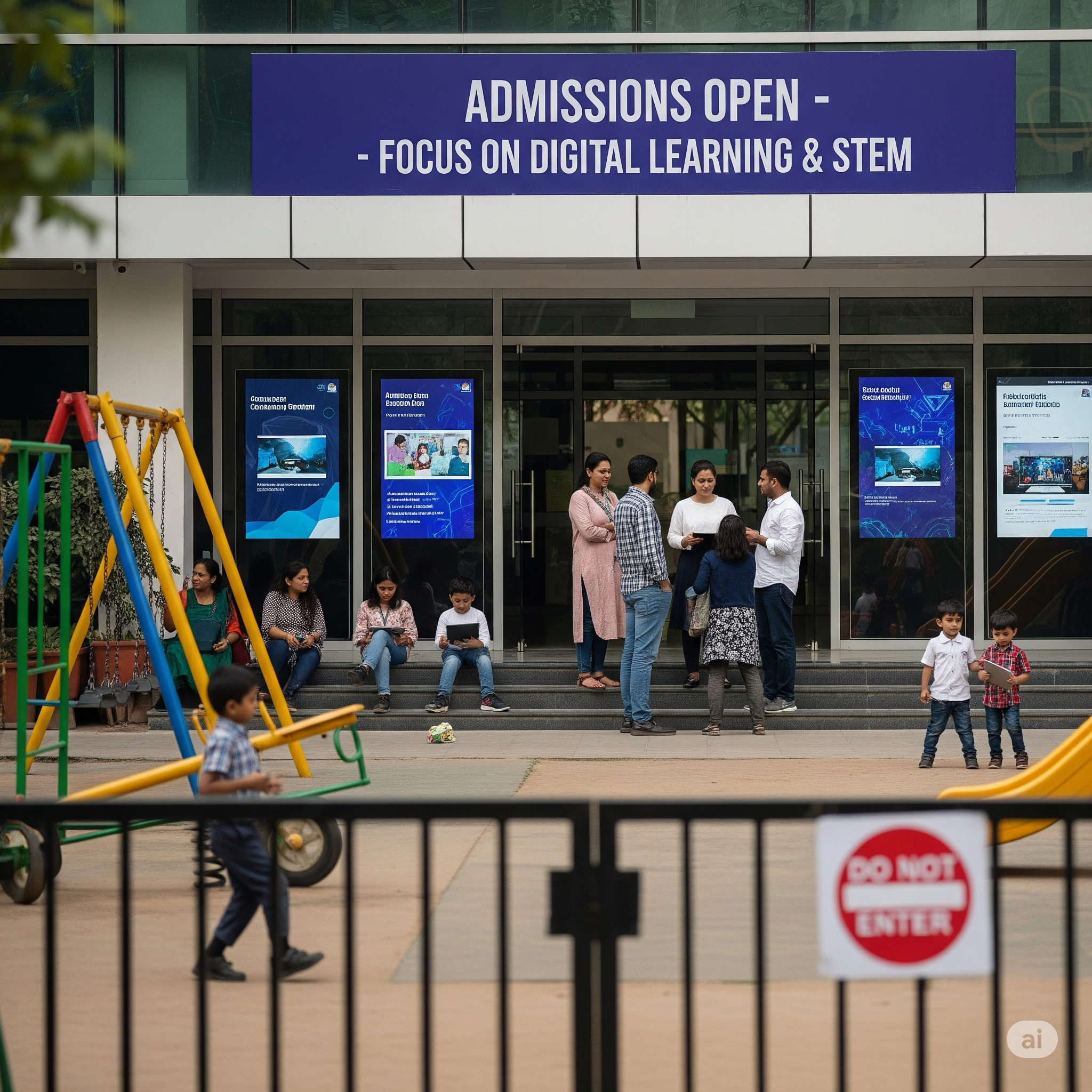
Why Parents May No Longer Need to Prioritize Playgrounds in School Choice New Delhi, India – 2025
In today’s educational landscape, the criteria for selecting the right school for children are evolving. Traditionally, large playgrounds and extensive sports facilities were seen as essential components of a quality school. However, with the implementation of the National Education Policy (NEP) 2020, the focus is shifting towards holistic educational outcomes rather than the physical size of school facilities. Here’s why parents may no longer need to prioritize playgrounds when choosing a school for their children.
Shifting Focus to Holistic Development
The NEP 2020 emphasizes a comprehensive approach to education that goes beyond physical activity, aiming to nurture all aspects of a child’s development including intellectual, emotional, and social growth. This policy encourages educational institutions to:
- Enhance Cognitive Skills: Prioritize critical thinking, problem-solving, and creativity over traditional physical education.
- Incorporate Technology: Integrate digital tools into the curriculum, providing students with skills necessary for the digital age, which can compensate for the lack of extensive physical play areas.
- Focus on Emotional and Social Learning: Encourage programs that develop empathy, communication skills, and teamwork, which are crucial for personal development and can often be facilitated within classroom settings.
Technological Innovations in Physical Education
With advancements in technology, physical education is becoming more versatile and less dependent on large outdoor spaces:
- Virtual Reality (VR) and Augmented Reality (AR): Schools are increasingly using VR and AR to simulate physical activities and sports, providing students with interactive and engaging physical education experiences without the need for large playgrounds.
- Online Fitness Programs: These programs offer structured exercise routines that students can follow within smaller spaces or even at home, ensuring students receive adequate physical activity irrespective of the school’s infrastructure.
Utilizing Community Resources
The NEP encourages schools to make use of community resources, which can be particularly beneficial for institutions with limited space:
- Community Sports Facilities and Parks: Schools without large playgrounds can partner with local community centers and parks to ensure students have access to sports and physical activities.
- Shared Facilities: By sharing resources with other schools or community programs, institutions can provide physical education opportunities without the overhead of maintaining large playgrounds.
Redefining School Environment
As educational priorities shift, the perception of what constitutes an ideal school environment is also changing:
- Indoor and Multipurpose Spaces: Modern schools are designing multipurpose indoor spaces that can be used for a variety of physical activities, from yoga and dance to general fitness.
- Quality Over Quantity: Parents are increasingly recognizing the value of the quality of education and extracurricular programs over the quantity of physical space available at the school.
Global Trends and Parental Perceptions
Globally, there is a growing understanding that a child’s educational success is more significantly influenced by the quality of their teachers and the curriculum than by the size of the school’s playground. Schools in countries with limited space, like Japan and Singapore, consistently achieve high educational outcomes by focusing on innovative teaching methods and comprehensive curricula.
Conclusion
The evolving educational landscape, shaped by the NEP 2020, suggests that parents may need to reconsider the traditional criteria for choosing a school. Instead of prioritizing large playgrounds, parents are encouraged to look at how schools are maximizing their educational offerings through innovative use of space, technology integration, and a focus on holistic development. By doing so, parents can ensure that their children receive a well-rounded education that prepares them for the challenges of the future, regardless of the physical size of the school’s playground.


